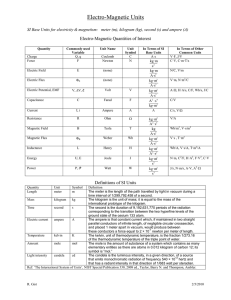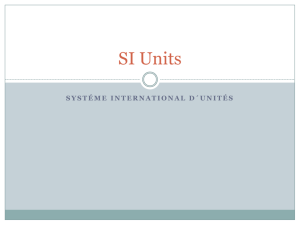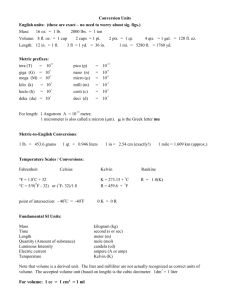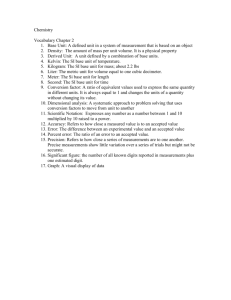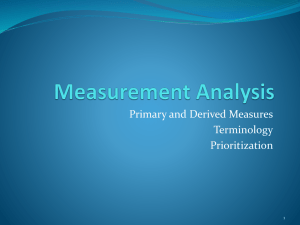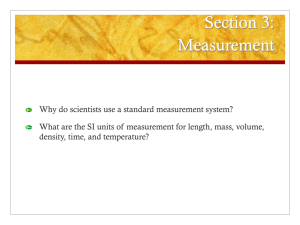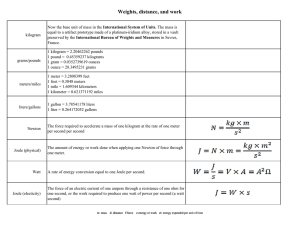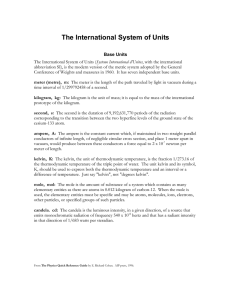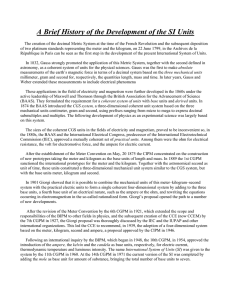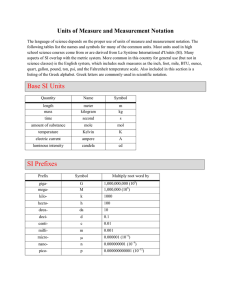Definitions of SI Base Units
advertisement
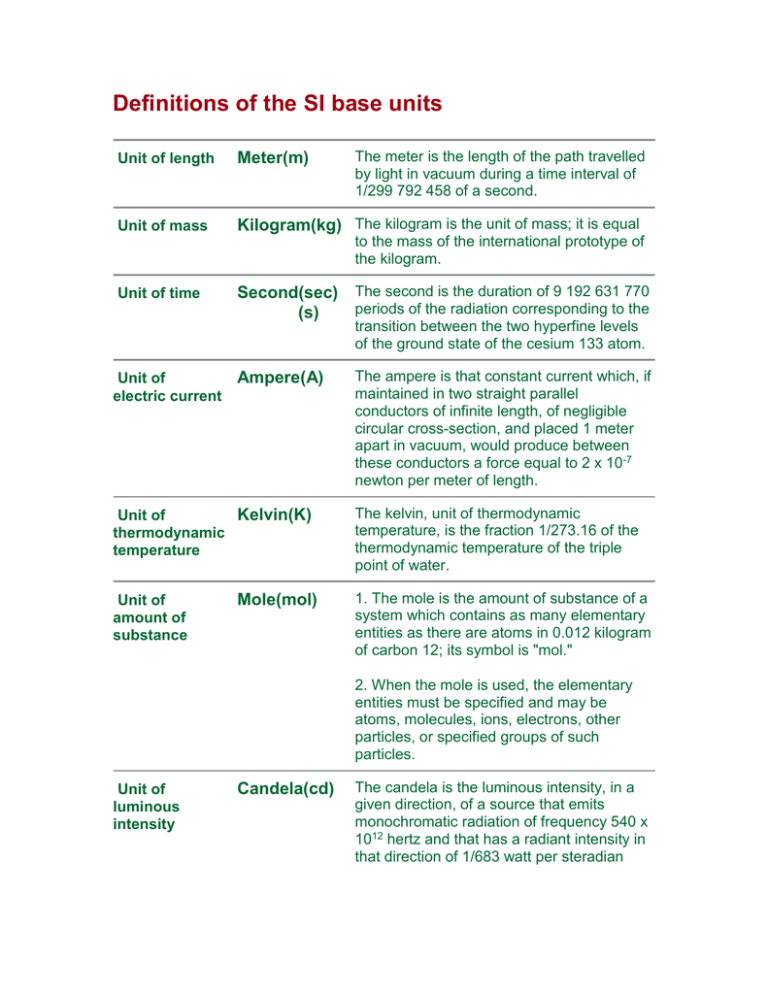
Definitions of the SI base units The meter is the length of the path travelled by light in vacuum during a time interval of 1/299 792 458 of a second. Unit of length Meter(m) Unit of mass Kilogram(kg) The kilogram is the unit of mass; it is equal to the mass of the international prototype of the kilogram. Unit of time Second(sec) The second is the duration of 9 192 631 770 periods of the radiation corresponding to the (s) transition between the two hyperfine levels of the ground state of the cesium 133 atom. Unit of electric current Ampere(A) Unit of Kelvin(K) thermodynamic temperature Unit of amount of substance Mole(mol) The ampere is that constant current which, if maintained in two straight parallel conductors of infinite length, of negligible circular cross-section, and placed 1 meter apart in vacuum, would produce between these conductors a force equal to 2 x 10-7 newton per meter of length. The kelvin, unit of thermodynamic temperature, is the fraction 1/273.16 of the thermodynamic temperature of the triple point of water. 1. The mole is the amount of substance of a system which contains as many elementary entities as there are atoms in 0.012 kilogram of carbon 12; its symbol is "mol." 2. When the mole is used, the elementary entities must be specified and may be atoms, molecules, ions, electrons, other particles, or specified groups of such particles. Unit of luminous intensity Candela(cd) The candela is the luminous intensity, in a given direction, of a source that emits monochromatic radiation of frequency 540 x 1012 hertz and that has a radiant intensity in that direction of 1/683 watt per steradian
